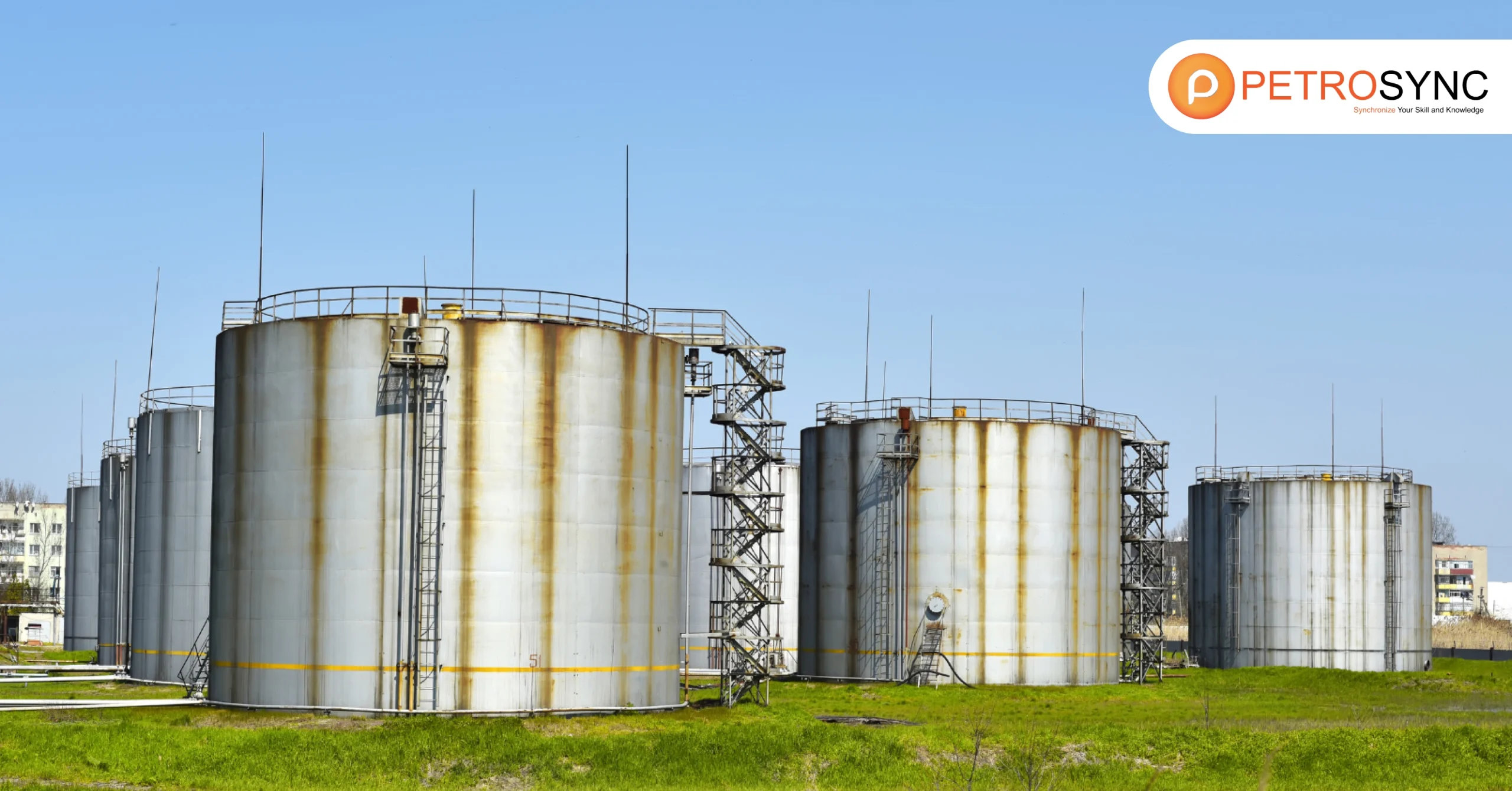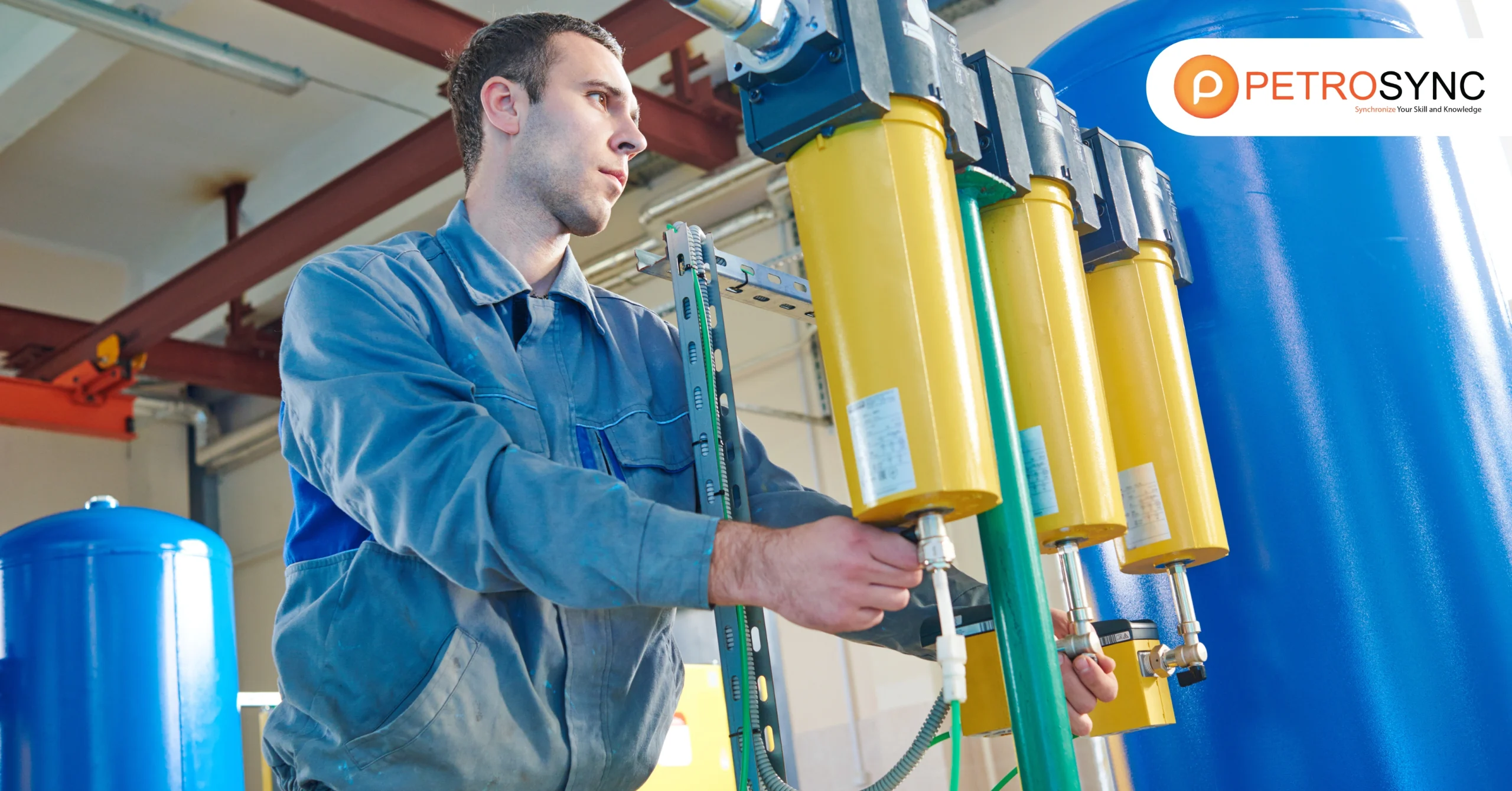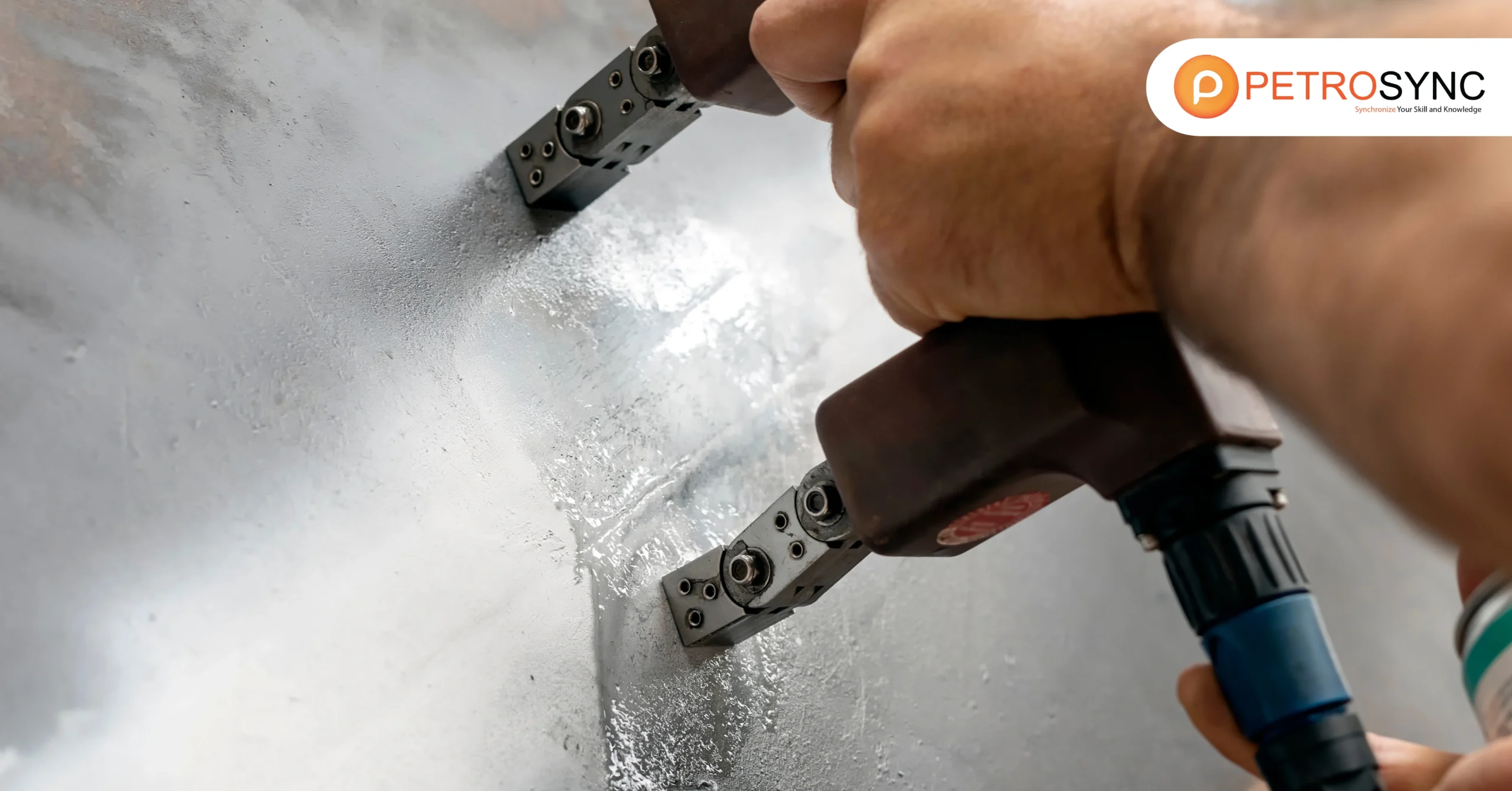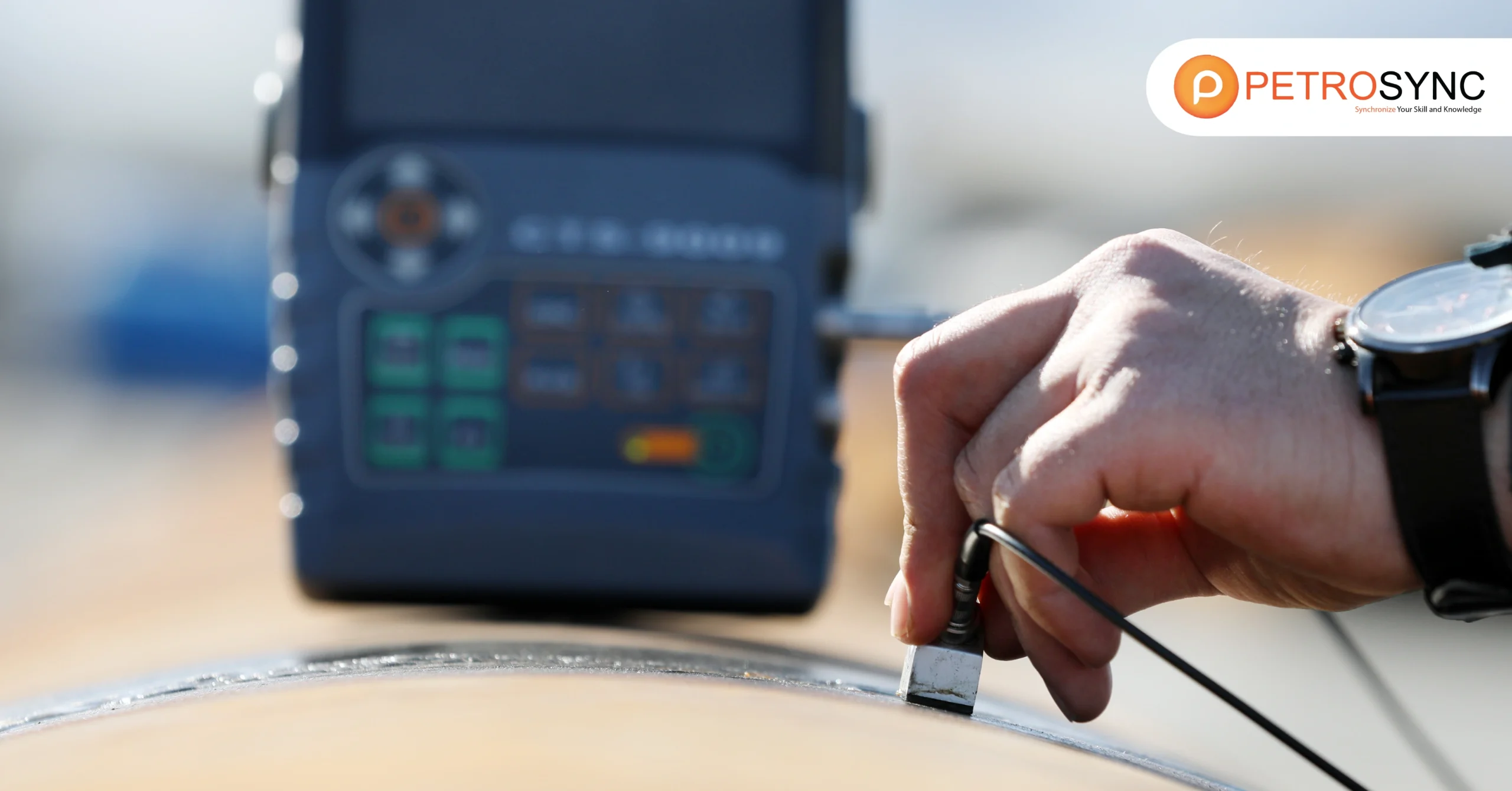API 653 is a standard developed by the American Petroleum Institute (API) that guides the inspection, repair, alteration, and reconstruction of aboveground storage tanks (ASTs) used to store petroleum, chemicals, and related materials. The standard addresses various aspects of AST maintenance, such as minimum inspection intervals, inspection techniques, and repair approaches.
API 653 is commonly applied in the petroleum and chemical industries to maintain the protection and reliability of aboveground storage tanks. PetroSync has created a 5-day API 653 training course designed to provide a detailed discussion of the engineering knowledge required for in-service storage tanks with an emphasis on the syllabus published by the API (Body of Knowledge).
The preparation course will clarify the basic intent of all the codes specified to be studied, how to interpret the code rulings, and ultimately, build confidence among participants to make informed decisions.
What Is API 653?
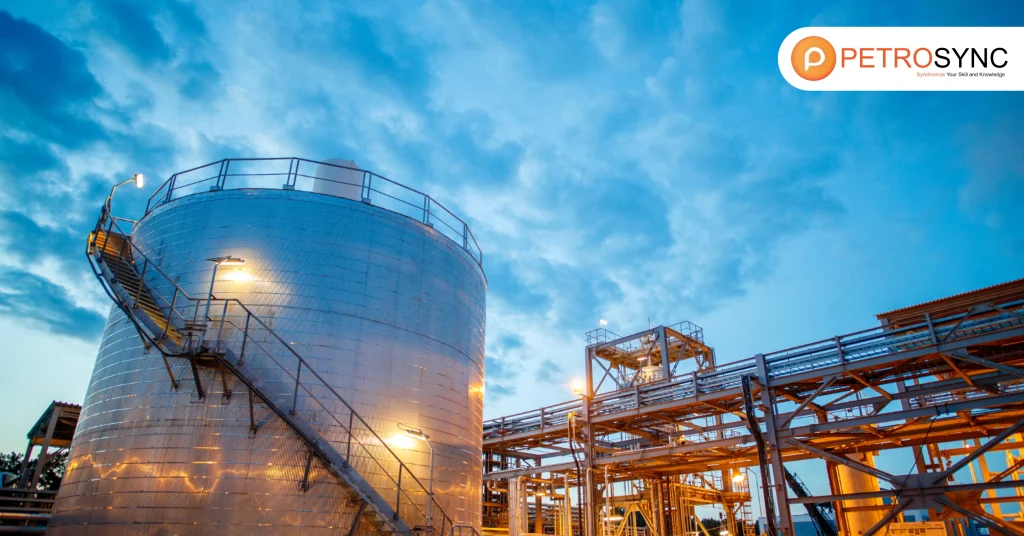
API 653 is a standard produced by the American Petroleum Institute (API) for the inspection, repair, alteration, and reconstruction of steel aboveground storage tanks used in the oil and petrochemical sectors. The standard applies to tanks built in accordance with the API 653 standard and other standards, and it provides extensive rules for ensuring that storage tanks operate safely.
It tackles a wide range of tank management issues, including the needed frequency of inspections, critical repair techniques, and compliance with industry safety laws. Companies who follow API 653 can successfully maintain the integrity of their storage tanks, prevent environmental hazards, and ensure regulatory compliance.
What Is API 653 Training?
API 653 training is a thorough program designed for professionals in the oil, gas, and petrochemical industries. It provides learners with the information, insights, and practical skills required to effectively maintain, inspect, repair, and reconstruct aboveground storage tanks. The API 653 standard specifies stringent requirements for assuring storage tank structural integrity and operational safety.
These guidelines are critical for avoiding leaks that could cause significant economic and environmental damage. Professionals who adhere to API 653 criteria ensure that tanks not only fulfill industry standards but are also safe for long-term use. This training session goes beyond theory by giving attendees hands-on experience applying API 653 standards in real-world circumstances.
It is a mandatory course for anyone responsible for the safety, maintenance, and long-term sustainability of storage tank operations. API 653 training is crucial for maintaining the integrity and reliability of storage tanks, whether you are a tank inspector, maintenance technician, or safety manager.
What Is API 653 Training Course Objective?
The API 653 training course aims to equip participants with a thorough comprehension of the API 653 standard, which governs the inspection, repair, alteration, and reconstruction of aboveground storage tanks (ASTs). In general, PetroSync’s API 653 training objectives are mentioned as follows:
- Main concepts and technical content of API 653 Code and the other reference codes
- Concept of metal degradation.
- Design fundamentals of storage tank (API 650).
- Evaluation of tank integrity of shell, bottom, and roof. Thickness calculations for intended design conditions or revised design conditions.
- How to clarify the need for Cathodic Protection and lining of tank bottom.
- Evaluation and decision for remedial action in Tank Settlement.
- How to estimate the remaining life of the tank and decide inspection intervals. Be able to choose the appropriate inspection tools and inspection intervals.
- Carry out re-rating, remaining life, and retirement thickness calculations.
What Is API 653 Training Course Outlines?
DAY 1 – Fundamentals of Storage Tank Design & Construction (API 653)
- Allowable stress values shell, roof, and bottom design
- Material selection
- Impact test requirement of API 653
- Impact test results
- Shell thickness calculations
- Bottom plate thickness calculations
- Roof plates calculations
- Nozzle openings calculations
- API 653 Requirements for Storage Tank Fabrication, erection, NDT, and leak testing
DAY 2 – Understanding of Storage Tank Inspection Code (API 653) Part 1
- Introduction, scope, definitions, and Organization of API 653
- Intervals and scope of inspections
- Data evaluation and corrosion assessment of roof, shell, and bottom.
- Estimation of corrosion rate
- Inspection and testing practices of API 653
- Evaluation for brittle failure
DAY 3 – Understanding of Storage Tank Inspection Code (API 653) Part 2
- Repairs, alterations & reconstruction of storage tanks
- Tank relocation and re-erection
- Replacement of tank bottom, hot tapping on tank shell.
- Detail discussions on material corrosion and degradation (API 571), NDT of tank repairs, leak testing
DAY 4 – Storage tank Inspection (study of other codes and standards)
- Discussions on cathodic protection methods against soil corrosion (API RP 651)
- Recommended practices for inspection of storage tanks (API RP 575)
- Introduction to Sec IX, Case studies of checking of PQR & WPS
DAY 5 – Discussions on Corrosion Protection & Quality of Welding
- Discussions on the Lining of bottoms of storage tanks (API RP 652)
- Discussions on API RP 577 and Welding Inspection
- Understanding the difference between Inspection and Examination and Various NDE methods to detect flaws in metals.
- Understanding rules imposed by ASME Sec V for various NDE techniques
- Final examinations Feedback and Concluding
What Are API 653 Training Benefits?
API 653 training offers a multitude of significant advantages to professionals, including:
1. Technical Competency Improvement:
Participants in the program will obtain knowledge, understanding, and skills in best practices for storage tank inspection and maintenance requirements.
2. Regulatory Compliance:
This training ensures that participants can follow applicable legislation and regulations, reducing the risk of noncompliance.
3. Career Opportunity Enhancement:
API 653 certification is well acknowledged in the industry, which can lead to greater job chances for participants.
4. Reduced Operational Risk:
With the correct skills, participants may assist firms in reducing operational risk and ensuring safety in their day-to-day operations.
Is There Any API 653 Individual Certification Program Issued by API?
Yes, API issues an individual certification program for API 653 standard known as the API 653 Certified Aboveground Storage Tank Inspector. API regulates the certification for individuals who pass the API 653 exam and meet the qualifications outlined in API 653 standard. The certification demonstrates the individual’s knowledge and skills in the inspection, repair, alteration, and reconstruction of aboveground storage tanks.
Who Should Attend API 653 Training Course?
PetroSync’s API 653 Tank Inspection training course will specifically benefit Engineers, Supervisors, and Managers from the following disciplines:
- Mechanical Engineering
- Inspection
- Maintenance & Operations
- Technical & Engineering
- Corrosion Engineer
Any design person involved in the integrity assessment of in-service tanks, repairs, and replacement of old tanks is also encouraged to enroll in our program. Mr. Chintamani, as our API 653 Tank Inspection, Repair, Alteration, and Reconstruction training course instructor, has extensive involvement in facilities inspection.
His proven journey and experience as a practical coach and mentor make PetroSync‘s training course not only a preparation for you to confidently pass the API 653 examination but also an opportunity to enhance your understanding of storage tank facilities.
Unlock Career Opportunities with PetroSync’s API 653 Training
PetroSync‘s expert-led training will help you broaden your technical knowledge and save money by avoiding costly, unscheduled storage tank shutdowns. Learn industry-recognized skills that improve operating efficiency while also contributing to safer, more reliable facilities. With just a limited number of seats available, enroll today to reserve your spot in the API 653 training course and take your profession to the next level!

Results-oriented and thorough SEO specialist with extensive experience in conducting keyword research, developing and implementing digital website promotion strategies and plans, managing campaigns to develop company websites in the digital world, excellent knowledge of marketing techniques and principles, and attentive strong attention to detail.

